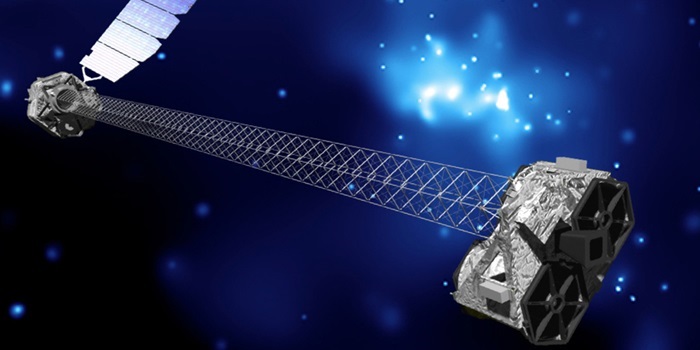12 MAY 15
By Christina Tækker
DTU researchers have helped design a telescopic mirror system used to detect an asymmetric supernova explosion which occurred at a faster pace and was more powerful on one side of the star. This provides new knowledge about how atoms behave under the most extreme conditions. The findings were recently published in Science.
An international team of space researchers are now one step closer to discovering what happened when Supernova SN1987A exploded 28 years ago. The findings were recently published in the international journal Science and are based on observations using two sensitive mirror systems designed at DTU Space, which has also developed and performed the advanced mirror coating enabling the observations.
Behind the mission is NASA's space telescope Nuclear Spectroscopic Telescope Array (NuSTAR), which is the first space telescope capable of producing extremely sharp images of high-energy X-ray radiation.
The sophisticated mirror system has enabled the researchers to document that the explosion of SN1987A was asymmetrical and occurred at a faster pace and was more powerful on one side of the star than on the other. Until now, scientists have only had a theory that the supernova exploded asymmetrically, but they have not been able to explain why.
500 km faster per second
Furthermore, the researchers have previously carried out measurements which show that elements from the supernova were ejected into space at a speed of 3,000 km per second. But now it turns out that the actual speed was 3,500 km per second. According to Carol Anne Oxborrow, PhD at DTU Space, the new knowledge will increase our understanding of the composition and formation of the elements:
"The findings indicate that something very special happened when the elements were formed in the star. This information is essential to the research on how stars die, how elements are formed, and how atoms are composed and separated. It also provides us with information about supernova mechanisms and thus about the fundamental properties of the elements under the most extreme conditions in the universe."
Exceptionally sharp images
DTU Space has developed a special multi-layered coating for the mirror systems which is essential for NuSTAR to capture high-energy X-ray radiation from the universe. The mirror systems each consist of more than a hundred densely packed shells shaped like a cylinder which reflect oncoming light. The mirror systems are 0.5 m long and 0.4 m wide and have an angular resolution of 1/60 degree. This means that they can distinguish between objects located in close proximity to each other in the sky. The mirror system is positioned at the end of a long mast attached to the NuSTAR telescope, capturing high-energy radiation emitted by the gas from the supernova, which is heated to millions of degrees.
NuSTAR was launched by NASA already in June 2012 with the aim of examining objects—such as black holes and neutron stars—to gain an overview of the many different ways in which big stars die and collapse.
Read the article in Science.















